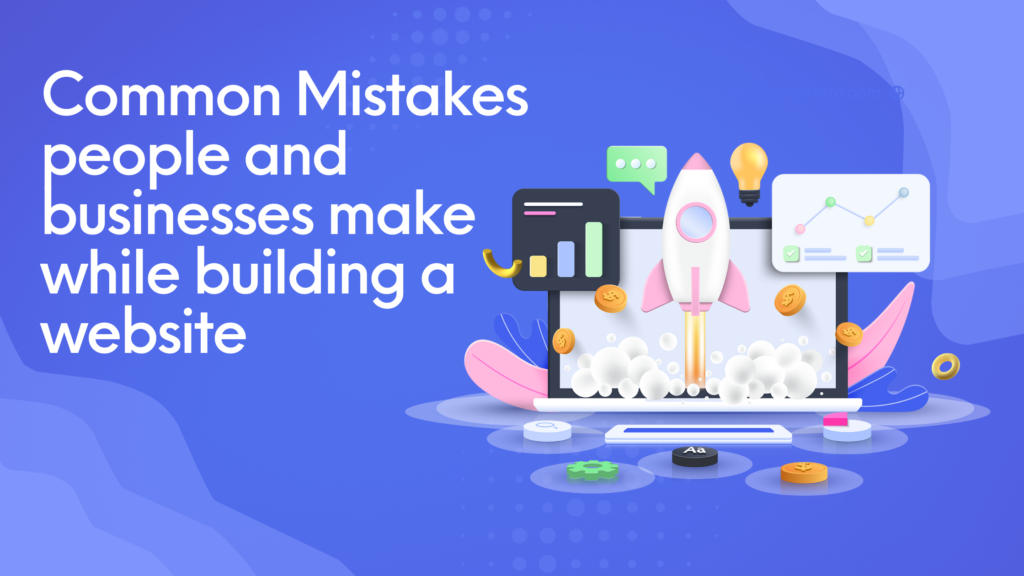Building a website can be an exciting yet daunting task. Whether you’re creating a personal blog, an online store, or a portfolio, there are several common pitfalls that many people fall into. In this post, we’ll explore some known unknown mistakes—things you might not realize are crucial until it’s too late. Let’s dive in!
1. Neglecting Mobile Optimization
The Mistake:
Many website creators design their sites primarily for desktop users, forgetting that a significant portion of traffic comes from mobile devices.
Real Example:
A local restaurant built a stunning website but didn’t ensure it was mobile-friendly. Visitors on their smartphones struggled to navigate the site, leading to missed reservations and frustrated customers.
The Solution:
Always use responsive design, which automatically adjusts your site for different screen sizes. Tools like Google’s Mobile-Friendly Test can help check your site’s mobile performance.
2. Overcomplicating Navigation
The Mistake:
Creating a complex menu with too many options can confuse visitors and lead them to leave your site.
Real Example:
An e-commerce site included a sprawling menu with dozens of categories and subcategories. Users found it overwhelming and often abandoned their shopping carts in frustration.
The Solution:
Keep your navigation simple and intuitive. Aim for a maximum of seven main menu items, and ensure that users can easily find what they need.
3. Ignoring SEO Basics

The Mistake:
Many people think that simply having a website is enough for it to rank well on search engines. This often leads to a lack of optimization for search engines (SEO).
Real Example:
A small business launched a beautiful website but didn’t incorporate basic SEO practices. As a result, they struggled to appear in search results, limiting their visibility and traffic.
The Solution:
Research keywords relevant to your business and incorporate them into your site’s content, meta descriptions, and titles. Tools like Google Keyword Planner can help identify valuable keywords.
4. Skipping Content Planning
The Mistake:
Failing to plan content before launching can result in a disorganized site with irrelevant or low-quality information.
Real Example:
A freelance graphic designer created a website with sporadic blog posts and portfolio pieces. Without a clear content strategy, the site appeared unfocused and inconsistent, leading potential clients to doubt their professionalism.
The Solution:
Outline your website’s content before you start building. Establish a content calendar for blog posts, and ensure all information aligns with your brand message.

5. Overloading with Plugins
The Mistake:
While plugins can enhance functionality, overloading your site with them can slow down performance and create security vulnerabilities.
Real Example:
A blog owner added numerous plugins to improve SEO, social sharing, and analytics. The site became sluggish and prone to crashes, frustrating readers and hurting engagement.
The Solution:
Limit the number of plugins you use and only install those that are necessary. Regularly audit your plugins to remove any that aren’t adding value.
6. Forgetting About Accessibility
The Mistake:
Designing without considering accessibility can alienate users with disabilities, resulting in a site that’s difficult to navigate for many.
Real Example:
An online store had a beautiful design but used low-contrast colors and tiny fonts. Users with visual impairments found it challenging to read product descriptions, leading to lost sales.
The Solution:
Adopt web accessibility standards (like WCAG) when designing your site. Use high-contrast colors, alt text for images, and ensure your site is navigable via keyboard.
7. Not Setting Up Analytics
The Mistake:
Launching a site without analytics is like sailing without a compass. You won’t know how your site is performing or where to make improvements.
Real Example:
A new blog started strong but didn’t set up Google Analytics. After a few months, the author realized they were losing traffic, but without data, they had no idea why.
The Solution:
Set up analytics tools like Google Analytics from day one. Regularly review your data to understand user behavior and make informed decisions about improvements.
Conclusion

Building a website is an exciting journey, but it’s easy to stumble into common pitfalls. By avoiding these known unknown mistakes, you can create a more effective and user-friendly site.
If you’re looking to build a website but want expert guidance to ensure you steer clear of these pitfalls, let’s talk! Book a call with me, and we can discuss your vision and how to make it a reality. Happy building!

